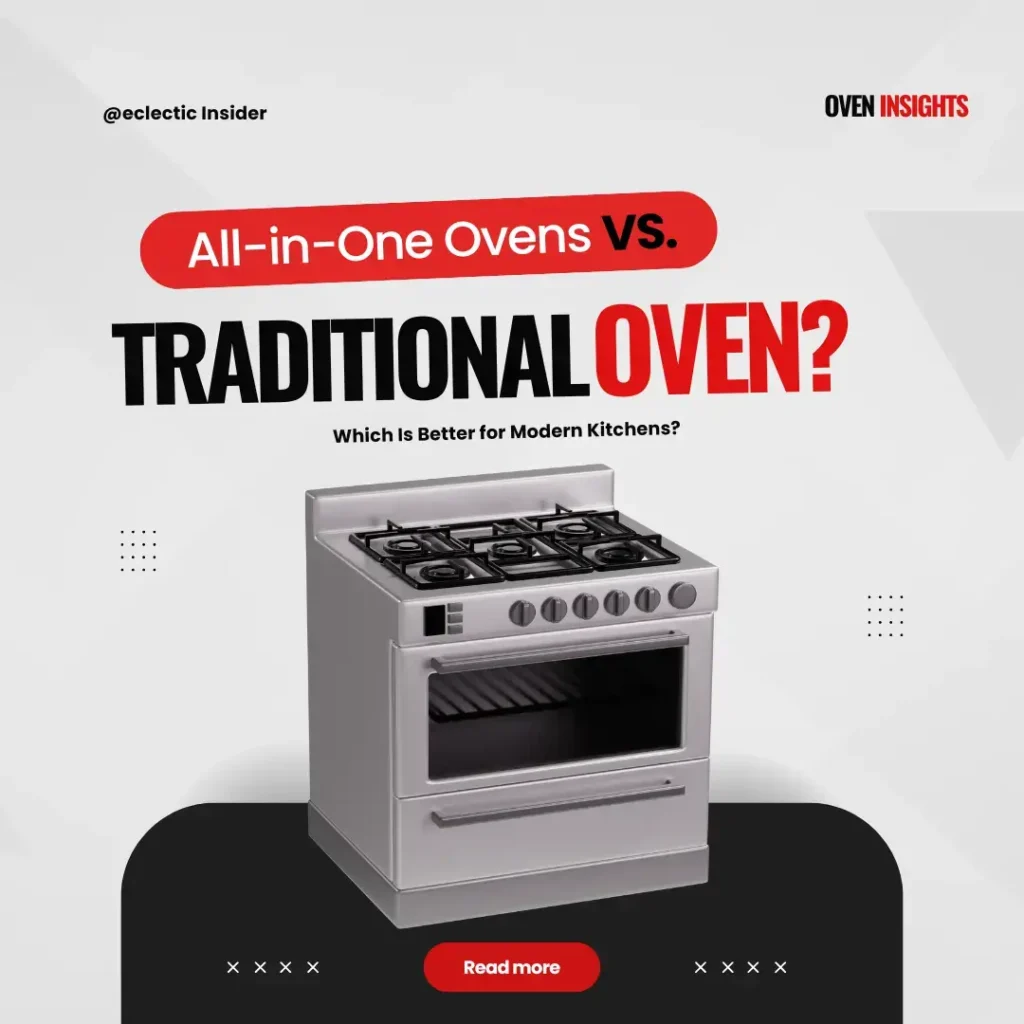All-in-One Ovens vs. Traditional Ovens: Which Is Better for Modern Kitchens?
In the ever-evolving world of kitchen appliances, the debate between all-in-one ovens and traditional ovens has become a hot topic among home cooks and culinary enthusiasts.
Both types of ovens offer distinct advantages, but which one truly stands out in the modern kitchen? This blog delves into the key differences, benefits, and considerations for choosing between all-in-one ovens and traditional ovens, helping you make an informed decision that aligns with your cooking needs and lifestyle.

Understanding Different Skin Types
Versatility and Functionality
All-in-one ovens are designed to be multi-functional appliances, combining the features of several kitchen devices into one compact unit.
Typically, these ovens offer various cooking modes such as air frying, baking, roasting, broiling, toasting, and dehydrating.
This versatility makes them ideal for those who enjoy experimenting with different cooking techniques or have limited kitchen space.
Space-Saving Design
One of the most significant advantages of all-in-one ovens is their space-saving design.
By consolidating multiple appliances into one, these ovens free up valuable counter and storage space, making them an excellent choice for small kitchens or apartments.
Energy Efficiency
Many all-in-one ovens are designed to be more energy-efficient than traditional ovens. With features like rapid preheating and faster cooking times, they can help reduce energy consumption and lower utility bills.
Advanced Technology
All-in-one ovens often come equipped with advanced technology, such as digital controls, smart features, and preset cooking programs.
These innovations make cooking more convenient and precise, allowing you to achieve consistent results with minimal effort.
Traditional Ovens: The Classic Choice
Reliability and Performance
Traditional ovens have long been a staple in kitchens, known for their reliability and consistent performance.
They offer straightforward cooking capabilities and are well-suited for those who prefer a classic approach to baking and roasting.
Larger Capacity
In general, traditional ovens provide a larger cooking capacity compared to all-in-one ovens.
This makes them ideal for preparing large meals, such as holiday feasts or batch cooking, where space and volume are essential.
Durability
Traditional ovens are built to last, with robust construction and fewer moving parts compared to some modern appliances.
Their durability ensures they can handle heavy use over many years.
Familiarity
For many home cooks, traditional ovens offer a sense of familiarity and ease of use.
The straightforward controls and lack of complex features make them accessible to cooks of all skill
Key Differences between All-in-One Ovens and Traditional Ovens
Functionality
- All-in-One Ovens: Offer multiple cooking functions in one unit, including air frying, roasting, baking, and more.
- Traditional Ovens: Typically focus on baking and roasting with a standard range of settings.
Space and Size
- All-in-One Ovens: Designed to save space by combining multiple appliances into one.
- Traditional Ovens: Generally larger and require more kitchen space.
Energy Efficiency
- All-in-One Ovens: Often more energy-efficient with faster cooking times.
- Traditional Ovens: May consume more energy due to longer preheating and cooking times.
Technology and Features
- All-in-One Ovens: Include advanced technology such as digital controls and smart features.
- Traditional Ovens: Offer a more straightforward approach with fewer technological features.
Conclusion
Choosing between an all-in-one oven and a traditional oven depends on your specific needs and preferences.
All-in-one ovens offer versatility, space-saving benefits, and advanced technology, making them a great choice for modern kitchens.
On the other hand, traditional ovens provide reliability, durability, and a classic cooking experience.
For the best of both worlds, consider how each option aligns with your cooking habits and kitchen space.
For more insights on essential kitchen appliances and the best all-in-one ovens, explore our related blogs to make the most informed decision for your culinary needs.
FAQs
What is an all-in-one oven?
An all-in-one oven is a multi-functional appliance that combines various cooking methods, such as air frying, baking, roasting, and broiling, into a single unit.
How does an all-in-one oven compare to a traditional oven?
All-in-one ovens offer multiple cooking functions and advanced features, while traditional ovens focus primarily on baking and roasting.
Are all-in-one ovens more energy-efficient than traditional ovens?
Yes, many all-in-one ovens are designed to be more energy-efficient with faster cooking times and reduced preheating.
Can an all-in-one oven replace multiple kitchen appliances?
Yes, an all-in-one oven can replace several appliances, such as air fryers, toasters, and dehydrators, saving counter space.
What are the advantages of a traditional oven?
Traditional ovens offer reliability, larger capacity, and a familiar cooking experience.
Are all-in-one ovens suitable for large families?
Some all-in-one ovens have large capacities and can handle family-sized meals, but traditional ovens generally offer more space.
Do all-in-one ovens have smart features?
Many all-in-one ovens come with digital controls, smart presets, and connectivity options for convenience.
How long does it take to preheat an all-in-one oven compared to a traditional oven?
All-in-one ovens typically have faster preheating times compared to traditional ovens.
Are there any downsides to using an all-in-one oven?
Some users may find the learning curve for advanced features challenging, and initial costs can be higher.
How do I maintain and clean an all-in-one oven?
Follow the manufacturer’s instructions for cleaning, which usually includes wiping down surfaces and removing trays and racks for washing.





